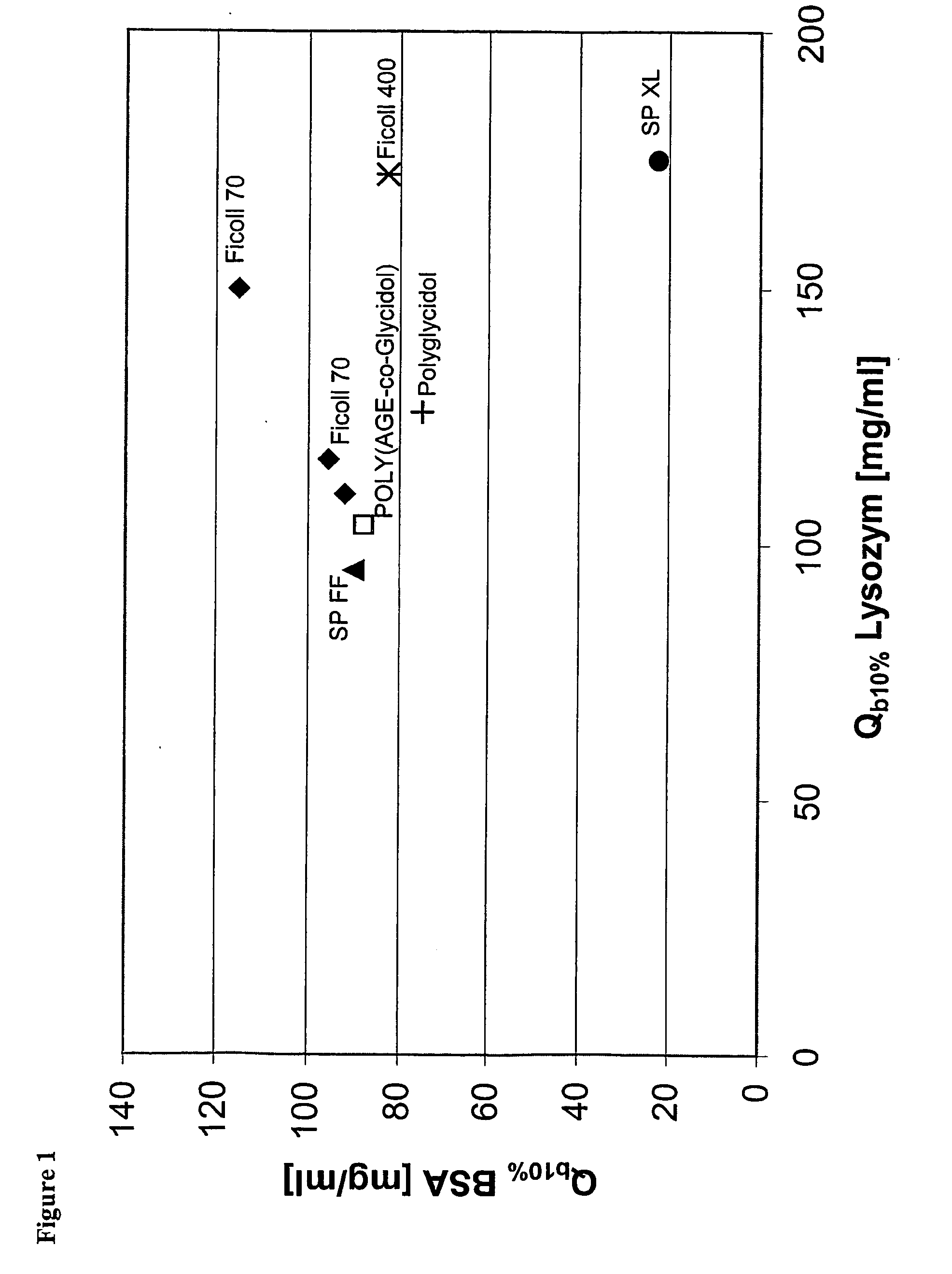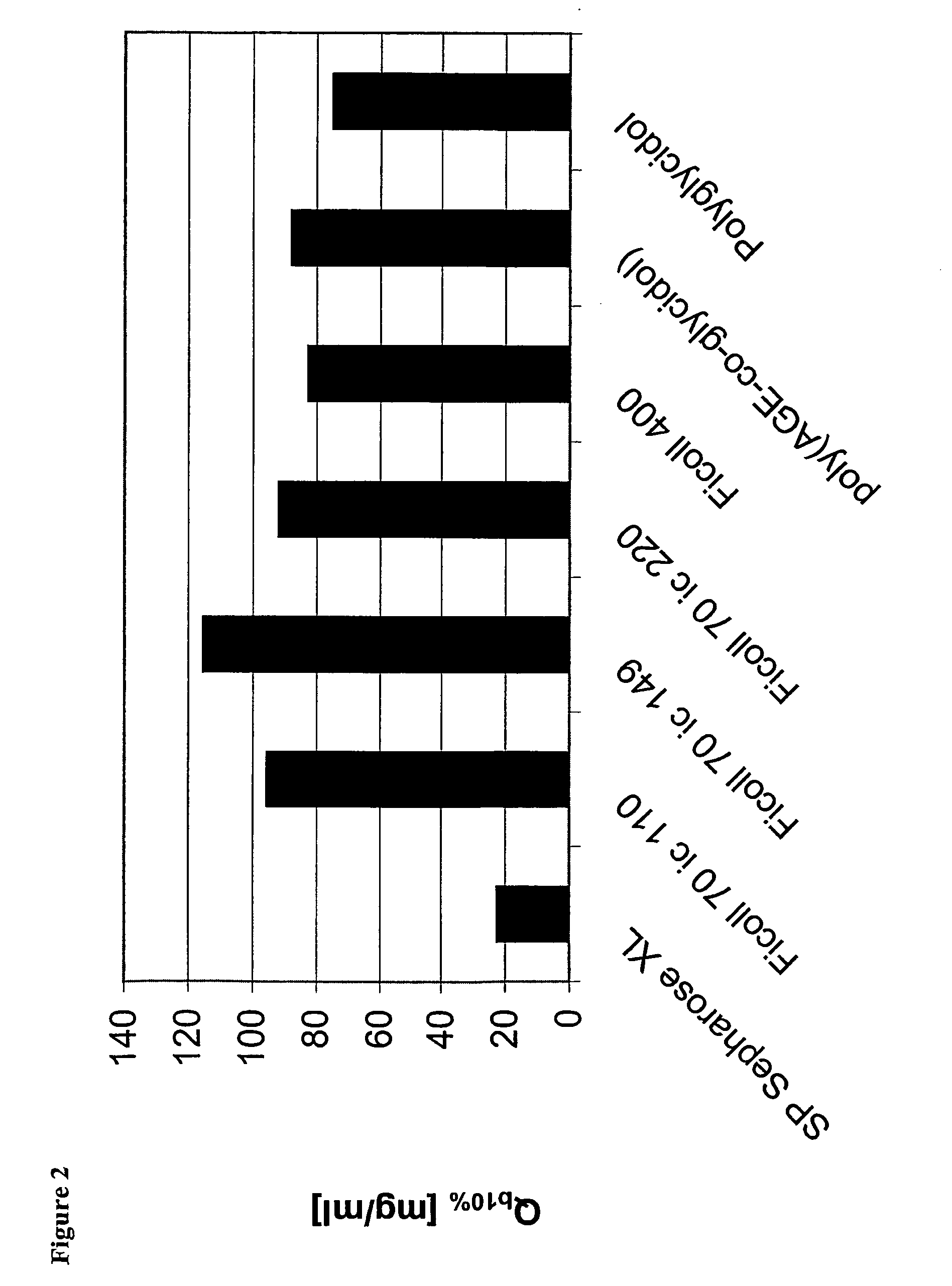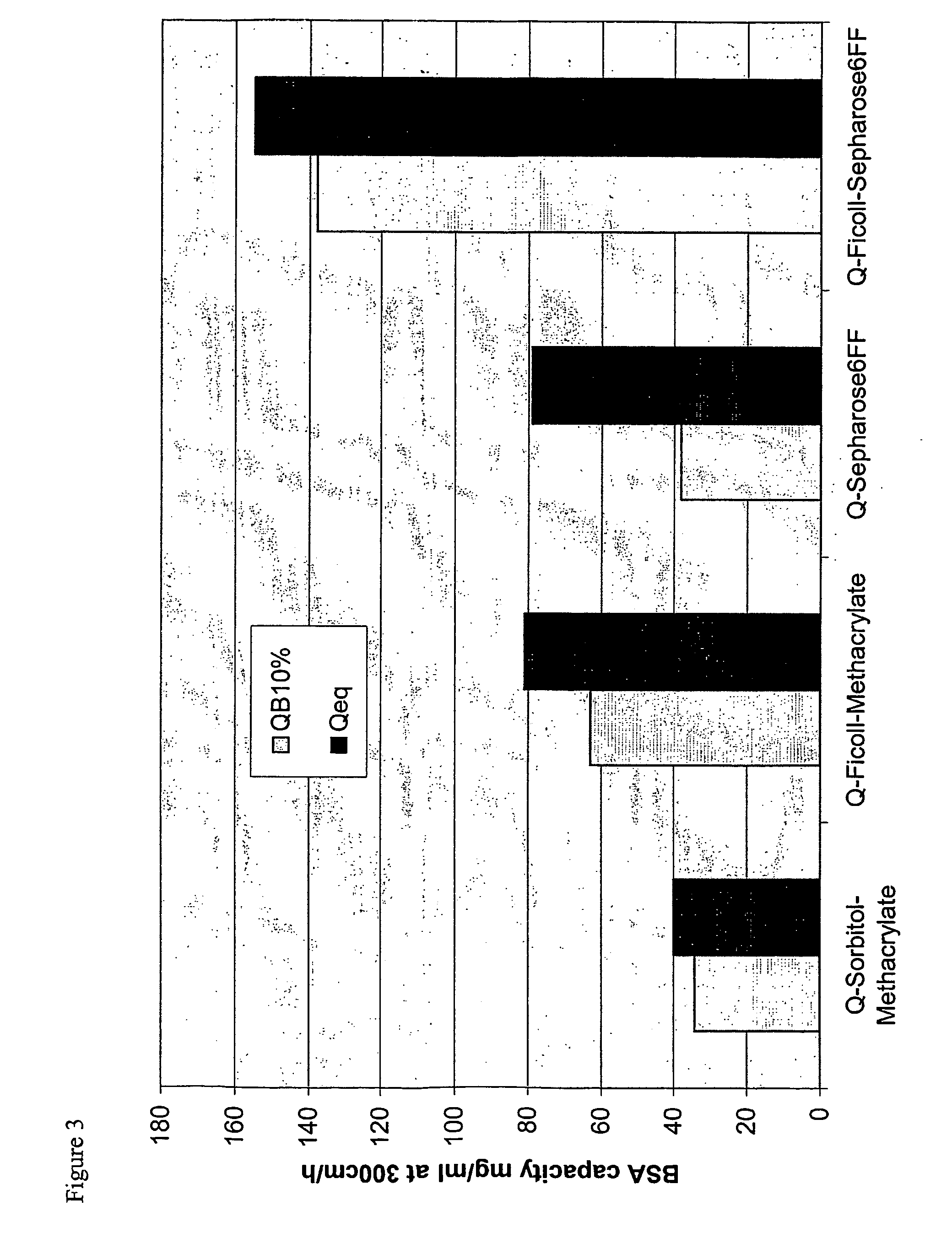Surface-modified base matrices
a base matrix and surface modification technology, applied in the field of isolating, can solve the problems of reducing the binding capacity of the surface, the less advantageous use of the flat dense surface, and the less advantageous kind of the layer, and achieve good chromatographic performan
- Summary
- Abstract
- Description
- Claims
- Application Information
AI Technical Summary
Benefits of technology
Problems solved by technology
Method used
Image
Examples
example 1
Synthesis of Polyglycidol
[0087] In a representative example a reaction vessel and a vial provided with a magnetic stirring bar were dried at 110° C. while the Hamilton syringes were dried at 65° C. over night. Tubes, membranes and syringe needles were dried over night in a dessicator filled with silica gel. The hot equipment was allowed to cool down in a dessicator before use. The initiator potassium-tert-butoxide (Aldrich) was weighed into the reaction vessel (M / I=100), whereupon the vessel was membrane sealed and flushed with argon gas. The glycidol monomer (14.0 g) (Aldrich) was introduced into a separate vial by Hamilton syringes. The vial containing the monomer mixture was flushed with argon.
[0088] The reaction vessel was cooled on ice. The monomer was transferred from the vial to the reaction vessel by using a peristaltic pump P-1 (Amersham Biosciences AB, Uppsala, Sweden) (tube ID 1.0 mm). After 30 minutes of addition the temperature of the reaction vessel was increased to...
example 2
Synthesis of Poly(allyl glycidyl ether-co-glycidol)
[0095] In a representative example a reaction vessel and a vial provided with a magnetic stirring bar were dried at 110° C. while the Hamilton syringes were dried at 65° C. over night. Tubes, membranes and syringe needles were dried over night in a dessicator filled with silica gel. The hot equipment was allowed to cool down in a dessicator before use. The initiator potassium-tert-butoxide (Aldrich) was weighed into the reaction vessel (M / I=105), whereupon the vessel was membrane sealed and flushed with argon gas. The monomers, allyl glycidyl ether (11.4 g) (Inspec Fine Chemicals B.V.) and glycidol (7.6 g) (Aldrich), were introduced into the vial by Hamilton syringes. The vial containing the monomer mixture was flushed with argon.
[0096] The reaction vessel was heated to 30° C. The monomer mixture was transferred from the vial to the reaction vessel by using a peristaltic pump P-1 from Amersham Biosciences AB, Uppsala, Sweden (tub...
example 3
Coupling of Ficol™ 70 to Sepharose™4FF
[0105] Beads of Sepharose™ 4 FF (100 g) (Amersham Biosciences AB, Uppsala, Sweden), distilled water (50 ml), sodium hydroxide (NaOH) (12 g) and sodium borohydride (0.2 g) were mixed in a reaction vessel at 30° C. Thereafter epichlorohydrin (24 ml) (Shell Chemicals) was added. After two hours, acetic acid was added until neutralisation of the reaction mixture was obtained. The resulting gel (epoxFF) was washed with water. This procedure gave an expoxy-content of 16.1 μmol / ml gel.
[0106] Ficoll™ 70 (50 g) and distilled water (80 ml) were mixed in a beaker and stirred slowly until the polymer was completely dissolved. The epoxFF gel (100 g) was weighed into a round-bottomed flask and the polymer solution was added. After approximately 30 minutes the desired amount of 50%-sodium hydroxide (5,25 ml) and sodium borohydride (0.05 g) were added. The slurry was stirred over night at 50° C. The reaction was stopped by neutralising with concentrated acet...
PUM
| Property | Measurement | Unit |
|---|---|---|
| porosity | aaaaa | aaaaa |
| bond dissociation energies | aaaaa | aaaaa |
| porosity | aaaaa | aaaaa |
Abstract
Description
Claims
Application Information
 Login to View More
Login to View More - R&D
- Intellectual Property
- Life Sciences
- Materials
- Tech Scout
- Unparalleled Data Quality
- Higher Quality Content
- 60% Fewer Hallucinations
Browse by: Latest US Patents, China's latest patents, Technical Efficacy Thesaurus, Application Domain, Technology Topic, Popular Technical Reports.
© 2025 PatSnap. All rights reserved.Legal|Privacy policy|Modern Slavery Act Transparency Statement|Sitemap|About US| Contact US: help@patsnap.com



